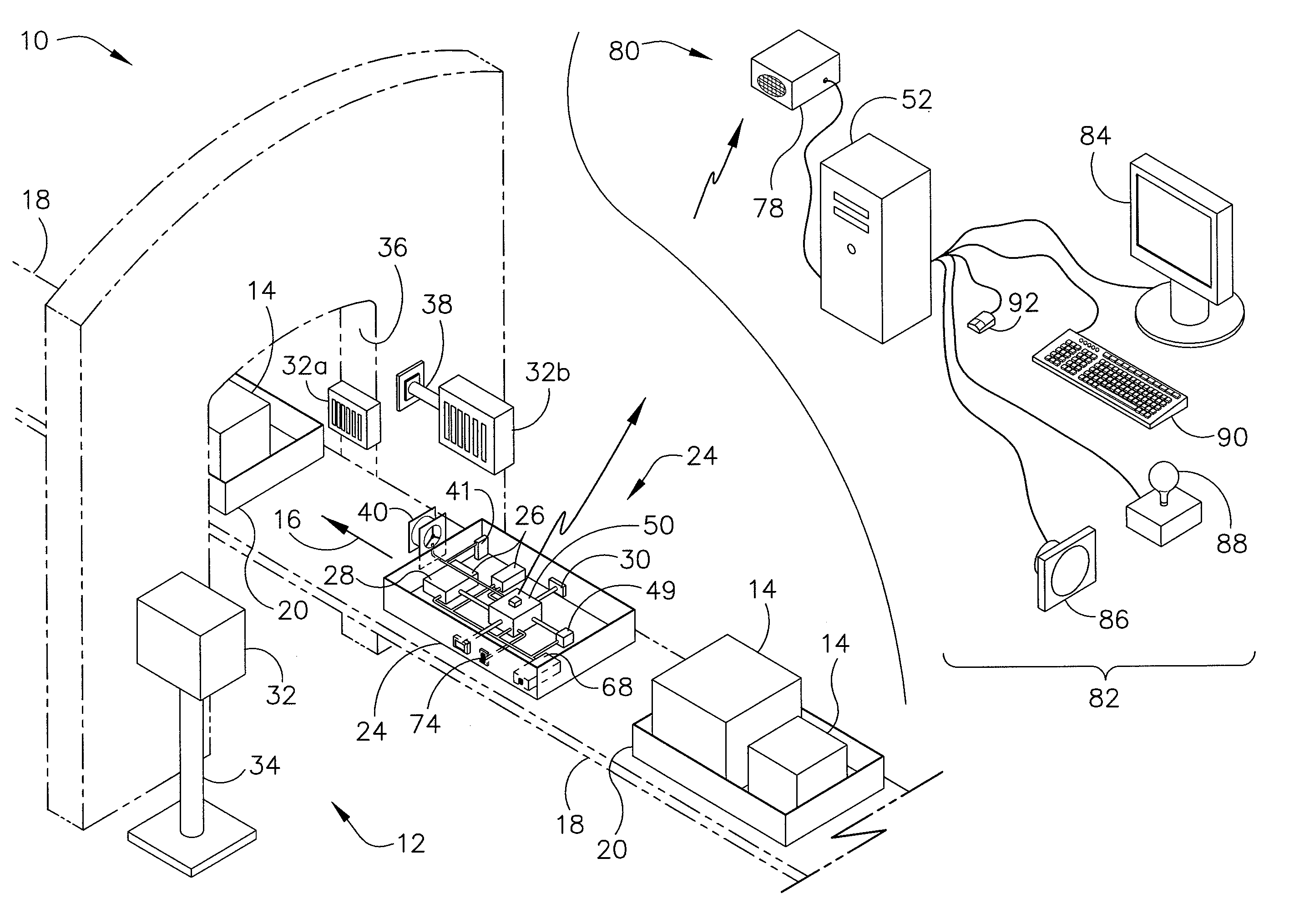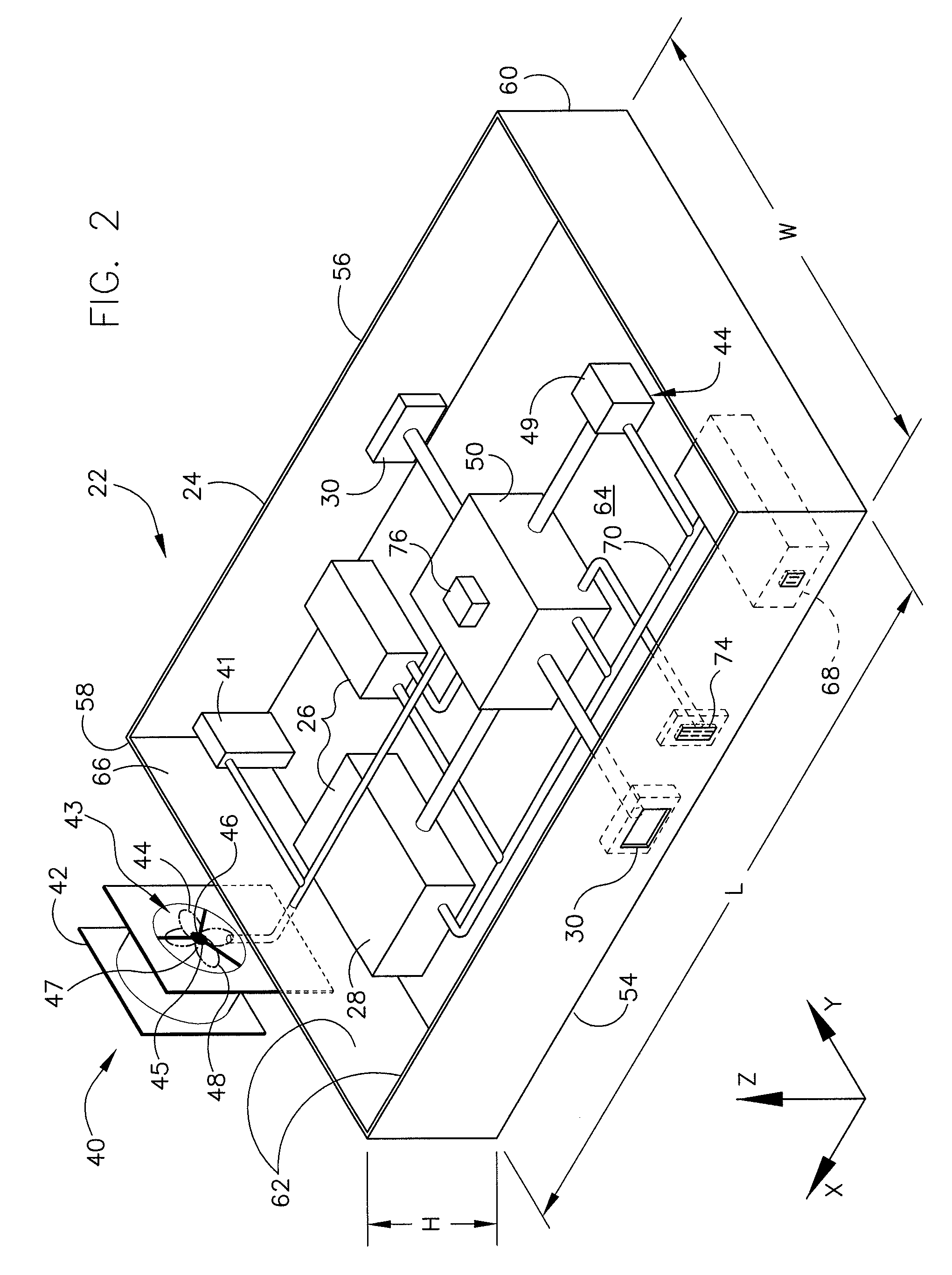Transport system evaluator
a technology of transport system and evaluator, which is applied in the field of evaluating apparatuses, can solve problems such as difficulty in identifying the problem and its location, system components that may operate improperly, and parts such as bearings, guide components, and drive wheels may become misaligned or damaged undetected,
- Summary
- Abstract
- Description
- Claims
- Application Information
AI Technical Summary
Benefits of technology
Problems solved by technology
Method used
Image
Examples
first embodiment
[0017]Referring to the figures, and more particularly to FIG. 1, an evaluating apparatus according to the present invention is designated by reference number 10. The evaluating apparatus 10, or evaluator, may be used to monitor a variety of transporting systems 12 without departing from the scope of the present invention. For example, as primarily described herein, the evaluating apparatus 10 may be used to monitor a system 12 handling items such as mail parcels or packages 14.
[0018]Although the evaluating apparatus 10 is primarily described in connection with such package-handling systems 12, the evaluating apparatus 10 is not limited to such use and may be used to evaluate other systems of transport. The techniques and apparatus 10 described herein may be used in other contexts, such as to evaluate systems transporting other items. For example, the techniques and apparatus 10 may be used to evaluate a luggage-handling system or a material-handling system such as those used to tran...
second embodiment
[0132]In the second embodiment for processing time and marker data to determine time elapsed since the evaluating device 22 passed a marker 32 and the identity of that marker (item (ii), above), the timing unit 40 provides to the local computing device 50 time data including a continuous count from an introduction of the evaluating device to the package-handling system 12. In this embodiment, the position-marker sensor 30 provides to the local computing device 50 updated position-marker data reflecting the most recent position marker sensed by the evaluating device 22.
[0133]The evaluating apparatus 10 of this second embodiment may be configured so that the timing unit starts counting (e.g., 1, 2, 3, etc.) once the evaluating device 22 is introduced to the package-handling system 12. For example, in some embodiments, the timing unit 40 starts counting once a user or device releases the evaluating device 22 into the system and flips a switch (not shown) to start the timer, or when a f...
third embodiment
[0136]In the third embodiment for processing time and marker data to determine time elapsed since the evaluating device 22 passed a marker 32 and the identity of that marker (item (iii), above), the timing unit 40 maintains a continuous count and sends time data corresponding to the count to the local computing device 50 upon receiving a signal from the local computing device or the position-marker sensor 30 that a position marker was sensed by the evaluating device 22. The timing unit 40 may also be adapted to provide the current count value upon receiving a signal from the accelerometer 28 or local computing device 50 that an acceleration of interest was sensed. The evaluating apparatus 10 may be configured to recognize a signal from the position-marker sensor 30, accelerometer 28, or local computing device 50 as a request for time data. The timing unit 40 may be configured to maintain the count by creating, or creating and storing, the count.
[0137]For example, if the evaluating d...
PUM
 Login to View More
Login to View More Abstract
Description
Claims
Application Information
 Login to View More
Login to View More - R&D
- Intellectual Property
- Life Sciences
- Materials
- Tech Scout
- Unparalleled Data Quality
- Higher Quality Content
- 60% Fewer Hallucinations
Browse by: Latest US Patents, China's latest patents, Technical Efficacy Thesaurus, Application Domain, Technology Topic, Popular Technical Reports.
© 2025 PatSnap. All rights reserved.Legal|Privacy policy|Modern Slavery Act Transparency Statement|Sitemap|About US| Contact US: help@patsnap.com



